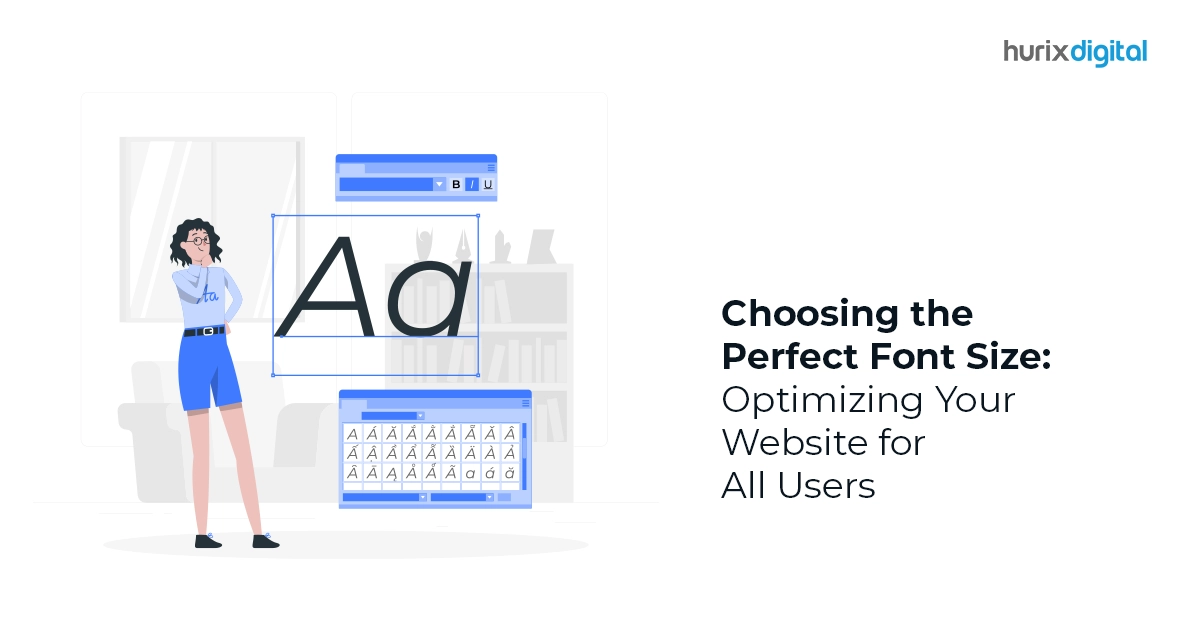Summary
The blog post emphasizes the significance of color contrast in web accessibility. It discusses the impact of color contrast on individuals with visual impairments and provides guidelines for ensuring adequate color contrast ratios.
Color contrast is the degree of difference in hue, lightness, or saturation between two or more colors. It is the visual distinction between foreground and background colors, text and background colors, or any two elements within a design. High contrast means that the colors are very different from each other, while low contrast means that the colors are similar or have less of a difference between them. Color contrast plays an important role in the design, particularly in ensuring accessibility for individuals with visual impairments. It can also affect the readability and overall visual impact of a design.
Color contrast is also important for accessibility, as it can affect the ability of people with visual impairments to read and understand content. High-contrast color combinations are generally easier for people with low vision or color blindness to perceive and differentiate, while low-contrast combinations can be more difficult to see and distinguish.
7 reasons why color contrast is important for accessibility
- Readability: A design with good color contrast is easier to read and understand. This is particularly important for people with visual impairments, but also for anyone who may be reading content in low light or on a small screen.
- Accessibility: Color contrast is a key factor in creating accessible designs that can be used by people with various types of visual impairments, including color blindness. By ensuring that there is enough contrast between elements, designers can make sure that everyone can access and interact with their content.
- Hierarchy and emphasis: Color contrast can be used to create a visual hierarchy in a design, where more important elements stand out more prominently. This can help users understand the structure and meaning of a design more easily.
- Aesthetics: Color contrast is also important for creating visually appealing designs. By choosing colors that complement each other and provide sufficient contrast, designers can create designs that are not only functional but also attractive and engaging. Color contrast is very helpful for those with disabilities. Those disabilities are
- Color blindness: Color blindness is a condition where a person has difficulty distinguishing between certain colors, particularly red and green. By using high-contrast color combinations, designers can ensure that people with color blindness can still differentiate between different elements in a design
- Low vision: People with low vision have difficulty seeing small or low-contrast details. High-contrast designs with clear color distinctions can help make content easier to read and understand.
- Photophobia: Photophobia is a condition where a person is sensitive to light. High-contrast designs with dark backgrounds and light text can help reduce eye strain and make content easier to read.
When using color for images and text, here are a few things to keep in mind when designing our products.
- Use high contrast: High contrast between text and background colors makes it easier for people with visual impairments to read. The text should be darker than the background or vice versa.
- Choose colors carefully: Be mindful of the colors you use and how they appear to individuals with color blindness or other visual impairments. Avoid using colors that are similar or blend, as this can make it difficult to distinguish between text and background.
- Test your color contrast: Use online tools to test the contrast ratio of your text and background colors. This can help you ensure that your design meets the recommended contrast ratios for accessibility.
- Use patterns or textures: Instead of relying solely on color to distinguish between elements, consider using patterns or textures to add visual interest and improve accessibility.
- Consider the context: Keep in mind the context in which your design will be used. For example, text that appears on a small mobile screen may require higher contrast than text that appears on a large desktop monitor.
Color contrast accessibility can be tested using various tools and techniques. A color contrast analyzer tool is a software application that helps designers and developers evaluate the contrast between two colors in a design. This type of tool is particularly useful for ensuring that a design meets accessibility standards, as it can help identify color combinations that may be difficult for people with visual impairments to perceive.
There are several color contrast analyzer tools available, both as standalone applications and as browser extensions. These tools typically work by analyzing the colors in a design and calculating the contrast ratio between them. They can then provide feedback on whether the contrast ratio meets accessibility guidelines, such as those set by the Web Content Accessibility Guidelines (WCAG).
Some color contrast analyzer tools also provide suggestions for alternative color combinations that would provide better contrast, or allow designers to adjust the colors in real time to see how changes affect the contrast ratio.
- Contrast ratio: Contrast ratio is a measure of the relative brightness of two colors, expressed as a ratio. It is typically calculated using the formula (L1 + 0.05) / (L2 + 0.05), where L1 and L2 are the relative luminance values of the two colors. The contrast ratio can range from 1:1 (no contrast) to 21:1 (maximum contrast).
- Color contrast checker: A color contrast checker is a tool that can be used to evaluate the contrast between two colors. There are many online accessibility color checkers available that can help designers test their designs for digital accessibility.
- Colorimeter: A colorimeter is a device that measures the color and luminance of a surface. It can be used to measure the contrast between two colors, as well as to calibrate displays and printers.
- Photoshop: Adobe Photoshop has a built-in feature called “eyedropper tool” that can be used to measure the contrast between two colors. By selecting one color with the eyedropper tool and then moving the cursor to another color, the contrast ratio will be displayed in the info panel.
Color contrast guidelines explained in WCAG:
WCAG (Web Content Accessibility Guidelines) provides guidelines on how to make web content more accessible to people with disabilities, including those with visual impairments. One of the key guidelines in WCAG is to ensure that there is sufficient color contrast between the text and its background to make it easy to read.
The WCAG guidelines specify minimum color contrast ratios that should be met to ensure that text is legible. The contrast ratio is calculated by comparing the relative luminance of the foreground (text) and background colors. The minimum contrast ratio requirements depend on the size and weight of the text. Here are the minimum contrast ratios for normal and large text:
Normal text (less than 18pt or 14pt bold): 4.5:1 (AA)
Large text (18pt or 14pt bold and above): 3:1 (AA)
It’s important to note that these are minimum requirements and that higher contrast ratios may be necessary for people with certain types of visual impairments. Web designers and developers should strive to exceed these minimum requirements whenever possible to make their content more accessible to all users.
There are a few exceptions to the color contrast guidelines in WCAG, but they are limited and should be used with caution. Here are the exceptions:
- Logotypes: Text or images that are part of a company or brand logo do not need to meet the contrast requirements. However, any text that is separate from the logo (such as a tagline or slogan) must meet the contrast requirements.
- Incidental text: Text that is not essential to understanding the content or functionality of a website does not need to meet the contrast requirements. Examples include captions for images or decorative text.
- Images of text: If an image of text is used for a decorative purpose and not for conveying information, it is exempt from the contrast requirements.
- Essential color: Sometimes, color is used to convey important information or to indicate a state or condition (such as a green checkmark to indicate success). In such cases, color contrast requirements do not apply. However, designers should also provide additional visual cues (such as symbols or text) to ensure that users with color vision deficiencies can still understand the information being conveyed.
It’s important to note that these exemptions should be used judiciously, and designers should strive to meet the color contrast guidelines whenever possible to ensure that their content is accessible to all users, including those with visual impairments.
In Conclusion
In summary, color contrast is important for improving readability and accessibility, creating visual hierarchy and emphasis, and enhancing the overall aesthetics of a design. At Hurix, all our products are color contrast tested and made accessible for all users.











